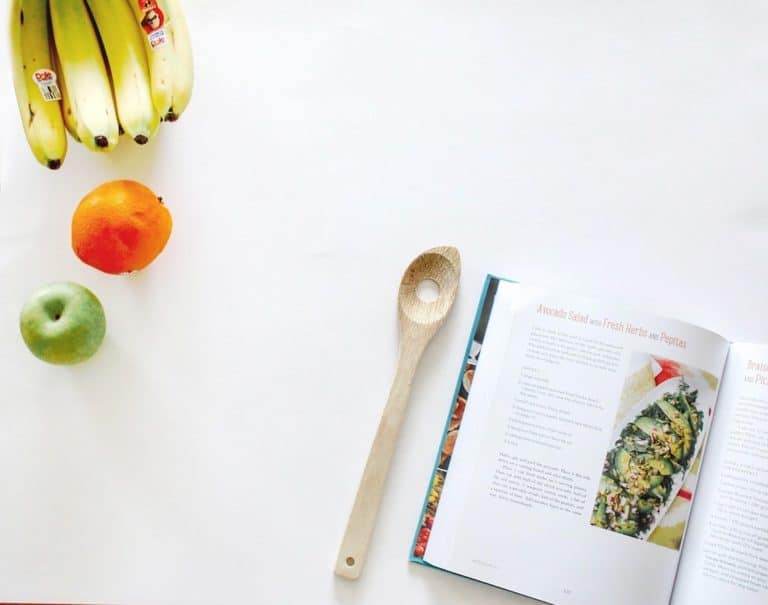Here’s Why Does Broccoli Stink
Almost any list of the healthiest vegetables on the internet mentions broccoli. It isn’t surprising since the cruciferous veggie is packed with fiber, antioxidants, vitamin C, omega-3 fatty acids and others. Unfortunately, its smell packs a punch, too, which is why many people retch at the sight (and smell) of broccoli.
What makes broccoli smell bad is that it contains sulfuric compounds. These compounds are the same reason why other cruciferous vegetables stink, too. Only 1% of flatulence is composed of sulfur. Sulfur is the one that makes it smell bad, and a small amount of it is enough to make flatulence reek.
Love the health benefits broccoli brings but hate the way it smells?
Then this article is for you.
Below, we will discuss just everything you need to know to keep the broccoli from stinking so much, from shopping, storing to cooking. By the time that you get to the end, you will realize that ending the rift between broccoli and your nose need not be that difficult, thus making it so much easier for you to stay healthy.
How Do You Cook Broccoli Properly?
Sometimes, cooking broccoli in the right manner is enough to make it less smelly. A trick many seasoned and casual cooks rely on is placing a few small chunks of bread in the water when steaming broccoli. In many instances, keeping broccoli from being overcooked can keep it from reeking that much.
Odor-wise, here’s the deal with broccoli and other smelly cruciferous vegetables: the longer you cook them, the more the sulfuric compounds in them break down and are released into the air.
You can eat broccoli raw to keep it from smelling. However, for some people, this is not an option. That’s because raw broccoli is hard to digest, which can cause abdominal distress. What’s more, eating broccoli raw can cause it to make a lot of gas in your intestinal tract, thus causing you to bloat and suffer from gassiness.
Fortunately for you if consuming broccoli raw is not an option, there are a few tips and tricks you may try:
- Count on vinegar. Into DIY tasks? Then you probably know very well that vinegar is an excellent deodorizer. This is why you can use it to keep your kitchen from reeking when cooking broccoli. You may add a little vinegar to the water. You may also place a small bowl of it near the stove.
- Add some bread. Like vinegar, bread has odor-absorbing properties. But unlike vinegar, bread is less likely to alter the taste of broccoli. To let bread do its job, all you have to do is add some large chunks of it to the bottom of the pot when steaming broccoli.
- Place a few drops of lemon juice. Want to rid broccoli of its foul odor and add a dash of flavor to it, too? Let a small amount of fresh lemon juice do the trick. Like vinegar, lemon juice is a fantastic deodorizer. But keep in mind that too much lemon juice might cause broccoli to end up a little brown.
- Avoid overcooking it. Broccoli is more enjoyable to eat if it still has some crunch to it. The moment that you can pierce the stem with a fork, remove it from heat. If what you are cooking is already smelly, it only means one thing: your broccoli is already overcooked!
In many instances, the first step to take to enjoy broccoli without harming your nose is by getting your hands on the right broccoli to prepare and serve.
And this brings us to this pressing question…
How Do You Shop for Broccoli?
The best broccoli to get is the freshest. When shopping, one should opt for something with crisp stems and leaves. The buds should be dark- or purplish-green and are still closed. Broccoli with wooly stems, yellow florets, and open buds are no longer fresh and thus should be avoided at all costs.
Not all broccoli have the same smell strength — some are less stinky than the rest.
As a general rule of thumb, the less fresh the broccoli, the more it smells. It’s because of this exactly why you should opt for nothing but fresh broccoli. This is especially true if you want to do your best to eat it despite the way it smells. While fresh broccoli will still smell like broccoli, it’s not going to be as bad.
Instead of checking out signs that the broccoli you are about to place in your shopping cart is the freshest of the bunch, let’s take a look at some of the red flags that it’s no longer worth making it to your kitchen:
- Yellowish florets
- Brownish coloration
- Strong bitter smell
- Whitish stuff on the stems
- Soft instead of firm stems
- Slimy parts
Needless to say, if broccoli exhibits one or all of the above-mentioned signs, stay away from it.
But the quest for a less-stinky broccoli treat doesn’t begin and end with buying the freshest broccoli that you can find. As soon as you get home, immediately store it the right way to keep it fresher and nice-smelling longer.
And this takes us to the following important question…
How Do You Store Broccoli Properly?
While broccoli can be stored on a countertop, storing it in the refrigerator is better. Without washing it, wrap broccoli loosely with a few paper towels and place it in the refrigerator, where it will stay fresh for up to five days. Broccoli may be stored in the freezer, too, where it will keep longer.
If you cannot stand the smell of broccoli but you have made peace with the fact that you have to eat it to stay in the pink of health, make sure that you store this cruciferous vegetable the right way.
Failure to store broccoli properly will cause it to lose its freshness, and old broccoli is the smelliest.
At room temperature, broccoli will last for around two days only. Placing it in the refrigerator instead if you will not be able to cook and consume it right away is highly recommended. However, don’t wash broccoli before refrigerating it. That’s because adding moisture to it will cause it to rot fast, even if it’s inside the fridge.
Refrigerated broccoli will stay in tip-top shape for up to five days. If you need to keep it fresh for a longer period of time, store it in the freezer. Here are the steps to take:
- Prepare broccoli by removing woody ends and dividing it into equal-sized parts.
- Place broccoli in a sieve and wash very well under running water.
- Bring a pan of water to a boil.
- Meanwhile, have a bowl of water with ice ready.
- Prepare a tray lined with paper towels, too.
- Place broccoli in boiling water and allow to cook for two to three minutes.
- Using a slotted spoon, transfer broccoli to iced water and leave it there for two to three minutes.
- Drain and transfer to the paper towel-lined tray.
- Allow broccoli to cool completely.
- Transfer broccoli to a freezer-safe container and freeze.
When blanched by following the steps above, you can freeze broccoli for up to a year. While you may also store it in the freezer without blanching it first, broccoli will lose its quality after a while.
Just Before You Buy or Cook Broccoli
Health authorities agree that broccoli is one of the healthiest vegetables on the face of the planet. However, it can also make many faces turn red because it tends to be one of the smelliest. This is most especially true if you cook broccoli past its peak freshness or you overcook it.
Above, we talked about what makes broccoli reek as well as some of the things that you may do to make the cruciferous vegetable pleasing to the nose.
Follow them to a T, and you will have no trouble eating healthy.
Related Questions
Is it safe to eat broccoli that tastes bitter?
Bitter broccoli is safe, albeit not pleasurable, to eat. The reason behind it having a bitter taste is that broccoli produces a bitter compound that helps keep pests at bay. Like broccoli, many vegetables make their own natural pesticides, too. However, it doesn’t mean that they are toxic to humans.
Is yellow broccoli bad to eat?
Broccoli that has turned yellow isn’t necessarily bad to eat. However, yellowing is a sign that broccoli is past its peak freshness, which means that it is not as delicious and nutritious as before. If only a few florets have turned yellow, they may be sliced off, and the rest can be consumed.





